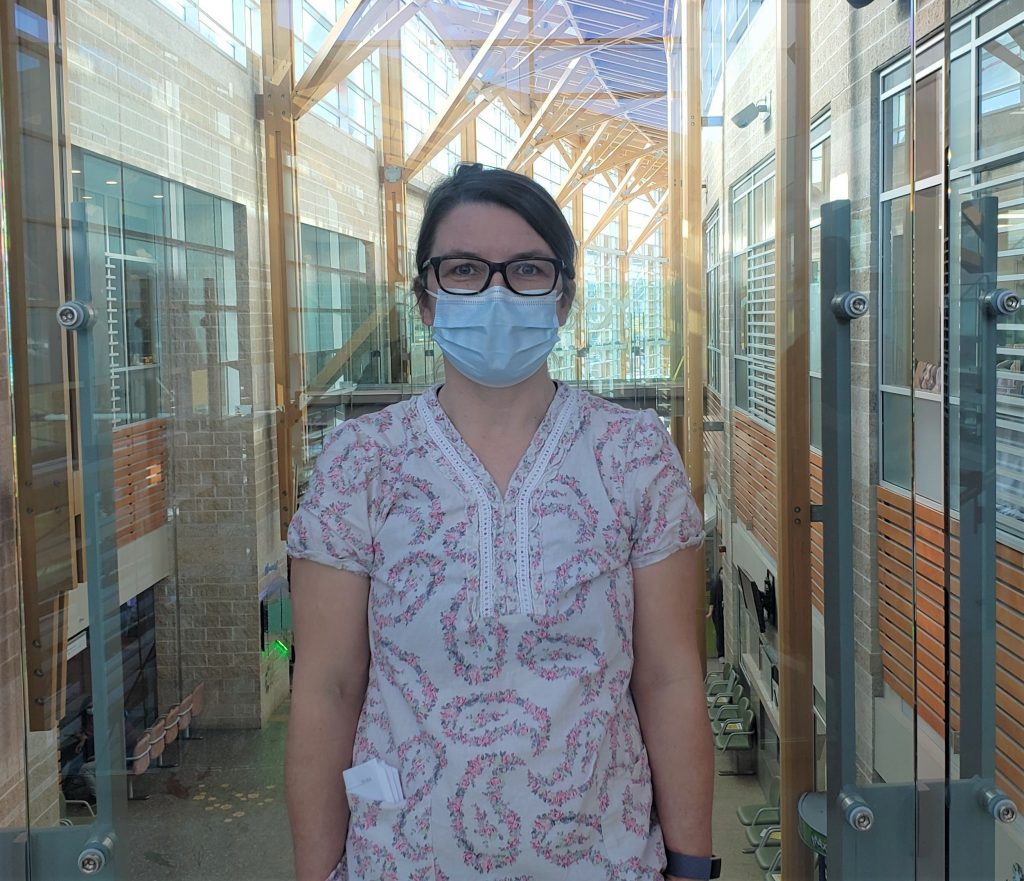Heart Month Profile: Marlene Wandel, RN, Cardiovascular and Stroke Unit (2C)
by Marcello Bernardo
 Marlene Wandell is a Registered Nurse on the Cardiovascular and Stroke Unit (2C).
Marlene Wandell is a Registered Nurse on the Cardiovascular and Stroke Unit (2C).It’s Heart Month, and we’re highlighting staff and departments at Thunder Bay Regional Health Sciences Centre (TBRHSC) who play a vital role in cardiovascular care. Today, we’re sharing some Q&A with Marlene Wandel, a Registered Nurse on the Cardiovascular and Stroke Unit (2C).
What does it take to be a Registered Nurse on 2C?
Nurses on 2C look after patients admitted from the Emergency Department, directly from the region, or from physician’s offices. We also coordinate the nuts and bolts of transfers to larger centres for cardiac surgery, and receive patients coming back to TBRHSC after cardiac surgery. We monitor and assess patients as they go through cardiac investigations and treatment, and meet patients at all stages of heart disease. Working on 2C takes a knowledge of that process, the ability to navigate our patients through the course of their admission and treatment, and keep them and their and families informed. At a time when families are not able to be at the bedside, communication and reassurance have emerged as important skills.
What is unique about your role?
Cardiology is about collaboration. The physicians, Nurse Practitioners, Social Workers, Occupational and Physical Therapists, Pharmacists, Clinical Nurse Specialists, and discharge planners are all involved in most of our patient’s journeys. Nurses on 2C function as coordinators of care and patient navigators, as well as providing bedside care and ongoing clinical assessments. The team on 2C is particularly effective at working together, and using the unique strengths that each team member brings. It is not uncommon to find a group of nurses looking at a telemetry strip together or consulting each other on a challenging situation.
What inspired you to work on 2C and in cardiac care?
I started at TBRHSC on a different medical unit, and was always intrigued by the telemetry monitors. It was frustrating that someone up in the ICU could see what was going on with patients, while it was to some degree invisible to me. The additional training to care for a cardiac patient was also very welcome, and the ongoing learning eight years later, is still rewarding.
How does your role impact patient care?
As a group, nurses represent the hospital experience to patients, as the majority of their interactions are with nurses. Personally, I try to bring a willingness to get to know every patient and to hear their unique story; empathy and compassion come much more easily when we know a person, not just a diagnosis. A sense of humour is important, both with patients (where appropriate), and with staff, to keep an often challenging job something that is fun to return to.
On the concept of practice what you preach, do you have any personal tips on how to stay heart healthy?
I use my commute to work as active time, mostly riding my bike or walking. Building activity into the day where we can is a way to get some exercise. 2C is quite far from the lobby, so volunteering to go pick up a wheelchair at the main entrance is a sneaky way to build some extra steps into the day. Wellness is a continuum and every little bit helps.
Any final thoughts?
Some days are hard at work, and you just want to walk away. What always pops into my head at those times is that we do get to go home at the end of the day, while the people we care for will still be in a hospital bed. The last nine months have been especially hard, and I have been so encouraged by the kindness I see all my colleagues demonstrating. COVID-19 might be infectious, but so is kindness!